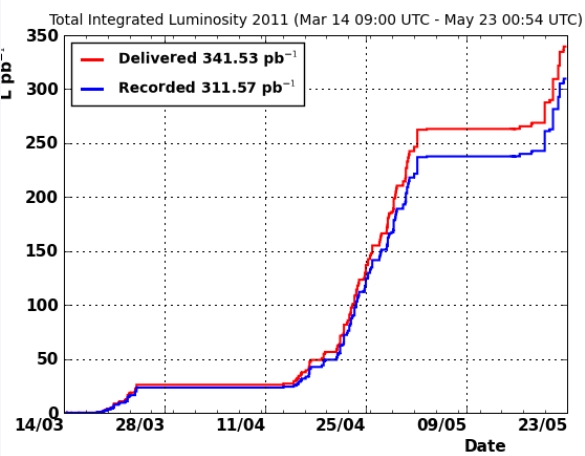Instantaneous luminosity is a measure of how many collisions take place per second: If you call it L, and call S the cross section of proton-proton collisions, the number of collisions N per second is just the product N=S*L. The higher L gets, the happier experimental physicists are, because they thus collect more data. And more data is crucial for new discoveries: only by accumulating large amounts of integrated luminosity (which is the product of instantaneous luminosity and data collection time) can the experiments access the rarest phenomena which are believed to be the key to understanding what new physics lies beyond the Standard Model.
At a luminosity of 1.075 E33, about 20 Z bosons are produced in the core of the ATLAS and CMS detectors every second; a top-quark pair appears every six seconds or so. These are Standard Model particles, but I mention them here because they are ideal "standard candles" which are extremely useful both to calibrate the detectors and the analysis strategies (e.g. the methodologies to detect and isolate clean lepton candidates from the dileptonic Z decay, or b-tagged jets from top decay) and as a starting point for searches of new physics.
 So, kudos to LHC machinists... There is a large margin of further improvement of the number reached tonight, because the beam parameters are still not optimal. The data delivered to CMS and ATLAS is piling up very quickly, as is clear by a quick inspection of the data versus time collected by CMS, for instance (see figure on the right). So, it looks very likely that for summer 2011 conferences the experiments will have 1-inverse-femtobarn results ready... This will be a very interesting summer!
So, kudos to LHC machinists... There is a large margin of further improvement of the number reached tonight, because the beam parameters are still not optimal. The data delivered to CMS and ATLAS is piling up very quickly, as is clear by a quick inspection of the data versus time collected by CMS, for instance (see figure on the right). So, it looks very likely that for summer 2011 conferences the experiments will have 1-inverse-femtobarn results ready... This will be a very interesting summer! 


Comments